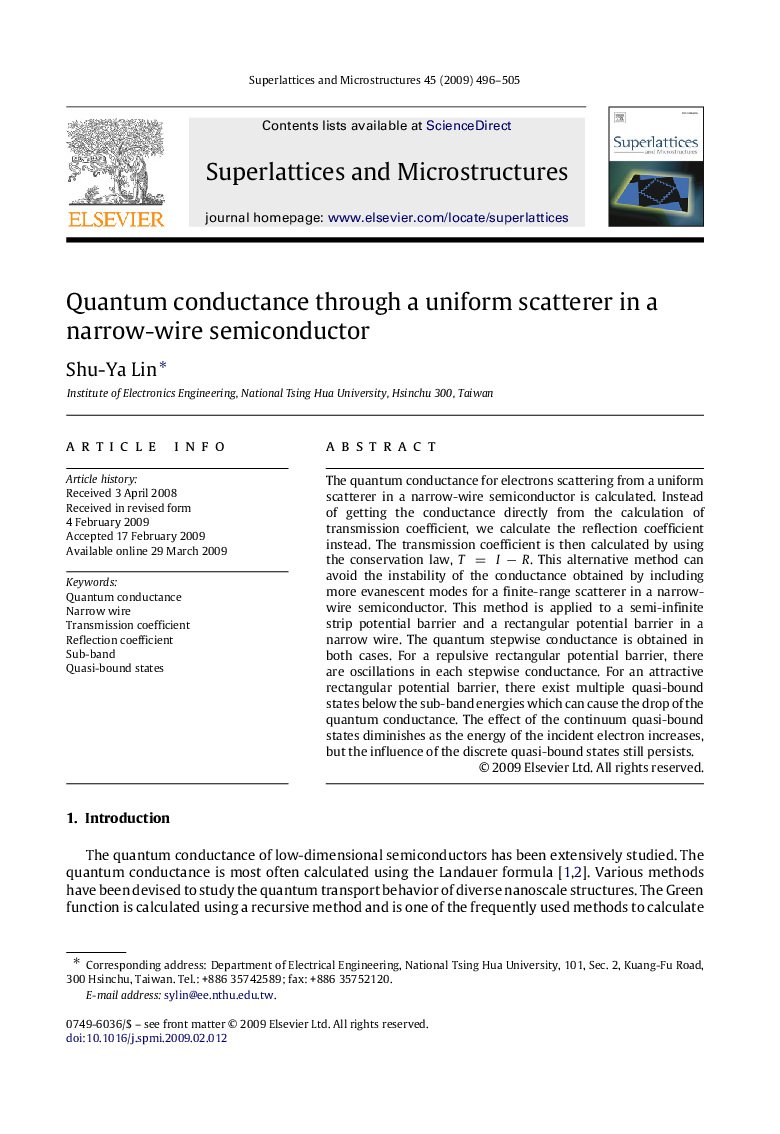| Article ID | Journal | Published Year | Pages | File Type |
|---|---|---|---|---|
| 1554503 | Superlattices and Microstructures | 2009 | 10 Pages |
The quantum conductance for electrons scattering from a uniform scatterer in a narrow-wire semiconductor is calculated. Instead of getting the conductance directly from the calculation of transmission coefficient, we calculate the reflection coefficient instead. The transmission coefficient is then calculated by using the conservation law, T=I−RT=I−R. This alternative method can avoid the instability of the conductance obtained by including more evanescent modes for a finite-range scatterer in a narrow-wire semiconductor. This method is applied to a semi-infinite strip potential barrier and a rectangular potential barrier in a narrow wire. The quantum stepwise conductance is obtained in both cases. For a repulsive rectangular potential barrier, there are oscillations in each stepwise conductance. For an attractive rectangular potential barrier, there exist multiple quasi-bound states below the sub-band energies which can cause the drop of the quantum conductance. The effect of the continuum quasi-bound states diminishes as the energy of the incident electron increases, but the influence of the discrete quasi-bound states still persists.
